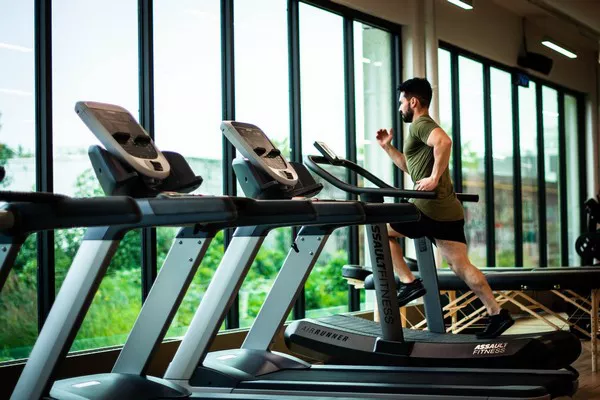When it comes to improving cardiovascular health, losing weight, and increasing overall fitness, cardio exercises are a staple in any gym routine. But with so many options available at the gym, it can be overwhelming to decide which type of cardio is best suited for your personal goals and fitness level. This comprehensive guide will help you understand the different types of cardio machines and workouts available at most gyms and how to effectively use them to maximize your health benefits.
Understanding Cardiovascular Exercise
Cardiovascular (cardio) exercise involves any activity that increases your heart rate, which helps improve heart health, burn calories, and increase the efficiency of your cardiovascular system. The main goal of cardio is to increase the heart rate into a target zone that is safe yet effective for achieving fitness goals. This target zone is often defined as a percentage of your maximum heart rate, which can be roughly calculated by subtracting your age from 220.
Types of Cardio Machines at the Gym
Gyms typically offer a variety of machines that can provide excellent cardiovascular workouts. Here’s a rundown of the most popular cardio machines:
Treadmills: Ideal for walking, jogging, or running, treadmills are versatile and cater to all fitness levels. They often feature adjustable speeds and inclines to vary the intensity of your workout.
Elliptical Machines: These provide a low-impact cardiovascular workout that mimics the motion of running but without the same level of stress on the joints. They are particularly useful for those with knee, hip, or lower back issues.
Stationary Bikes: Available in upright or recumbent forms, stationary bikes offer an effective cardio workout that puts minimal stress on the joints. These machines are great for high-intensity interval training (HIIT) or steady-state cardio.
Rowing Machines: Offering a full-body workout, rowing machines are excellent for cardio while also helping to build muscle strength in the arms, legs, and back.
Stair Climbers: These simulate the action of climbing stairs, providing a challenging workout that is particularly effective for toning the lower body.
Step Mills: Similar to stair climbers, step mills offer a more realistic stair-climbing experience. They can be quite demanding, making them a good choice for more advanced fitness levels.
Choosing the Right Cardio Machine
Selecting the right machine depends on several factors including your fitness goals, current fitness level, and any physical limitations. Here are some guidelines:
Weight Loss: For burning calories, the treadmill, elliptical, or rowing machine can be highly effective. Interval training on these machines can help maximize calorie burn.
Improving Cardiovascular Health: Machines that allow for prolonged steady-state cardio, such as the treadmill, stationary bike, or elliptical, are excellent for improving heart health.
Building Muscle Tone: Rowing machines and stair climbers can help build muscle in addition to providing a cardio workout.
Low-Impact Needs: For those with joint issues, the elliptical or recumbent bike provides a great cardio workout with reduced strain on joints.
Creating a Cardio Workout Plan
To benefit most from your gym cardio workouts, consider incorporating a mix of different types of cardio:
Beginners: Start with low-intensity sessions of 20-30 minutes, gradually increasing duration and intensity as fitness improves. A combination of treadmill walks and light stationary bike sessions could be ideal.
Intermediate to Advanced: Incorporate intervals and longer session times. Mixing machines such as the treadmill for sprints and the rowing machine for endurance sessions can provide comprehensive fitness benefits.
Specific Goals: Tailor your machine choice and workout intensity to your specific fitness goals. For instance, if training for a marathon, longer sessions on the treadmill or outdoor running are advisable.
Incorporating Cardio into Your Overall Fitness Routine
While cardio is essential, it should be part of a balanced fitness program that includes strength training, flexibility exercises, and proper nutrition. Balancing these elements will help you achieve optimal health and fitness results.
Strength Training: Incorporate at least two days per week of resistance training to build muscle, which can help increase metabolic rate and support weight loss.
Flexibility and Recovery: Include flexibility workouts like yoga or dedicated stretching sessions, and ensure you have adequate recovery days to allow your body to repair and grow stronger.
Monitoring Your Progress
Keeping track of your workouts and progress can help you stay motivated and adjust your training plan as needed. Use fitness trackers or apps to monitor your heart rate, calories burned, and other relevant metrics. Setting short-term and long-term goals will also keep you focused and committed to your routine.
Conclusion
Choosing the right cardio workout at the gym depends largely on your personal health and fitness goals. Whether your aim is to lose weight, improve heart health, or simply increase your overall fitness level, there is a cardio option at the gym to suit your needs. Remember to start slowly, listen to your body, and gradually increase the intensity of your workouts as your fitness level improves. With a consistent approach, the benefits of incorporating regular cardio into your fitness regimen are substantial and rewarding.
[inline_related_posts title=”You Might Be Interested In” title_align=”left” style=”list” number=”6″ align=”none” ids=”8332,8329,8253″ by=”categories” orderby=”rand” order=”DESC” hide_thumb=”no” thumb_right=”no” views=”no” date=”yes” grid_columns=”2″ post_type=”” tax=””]
































